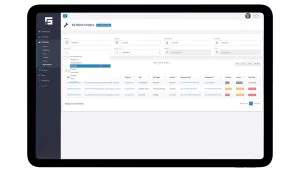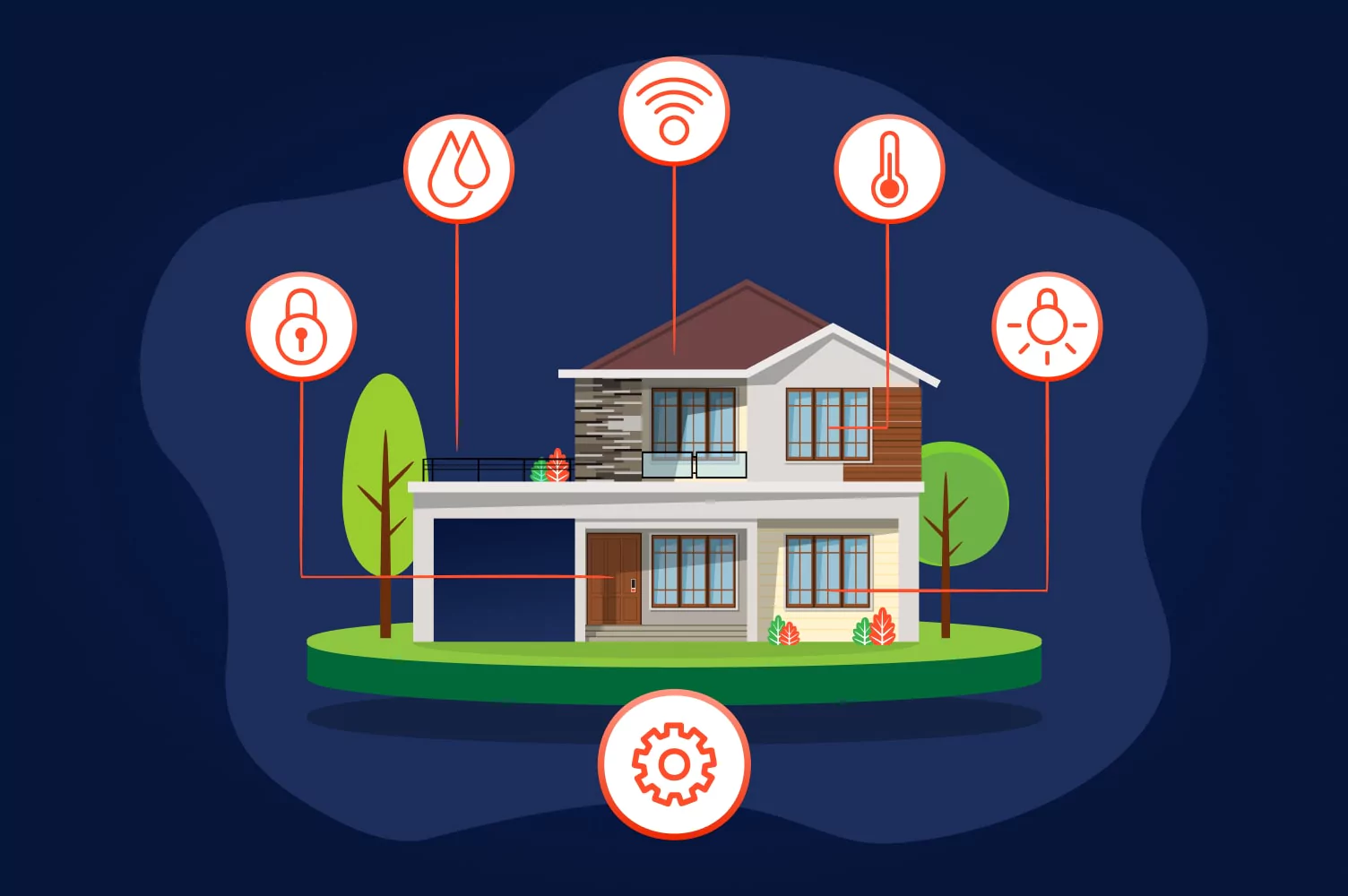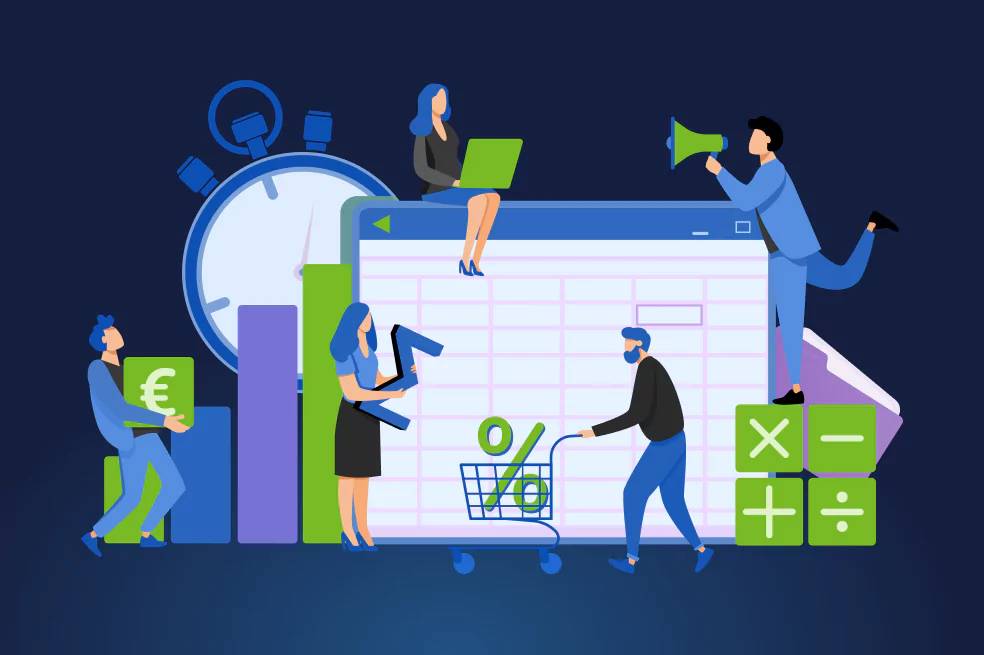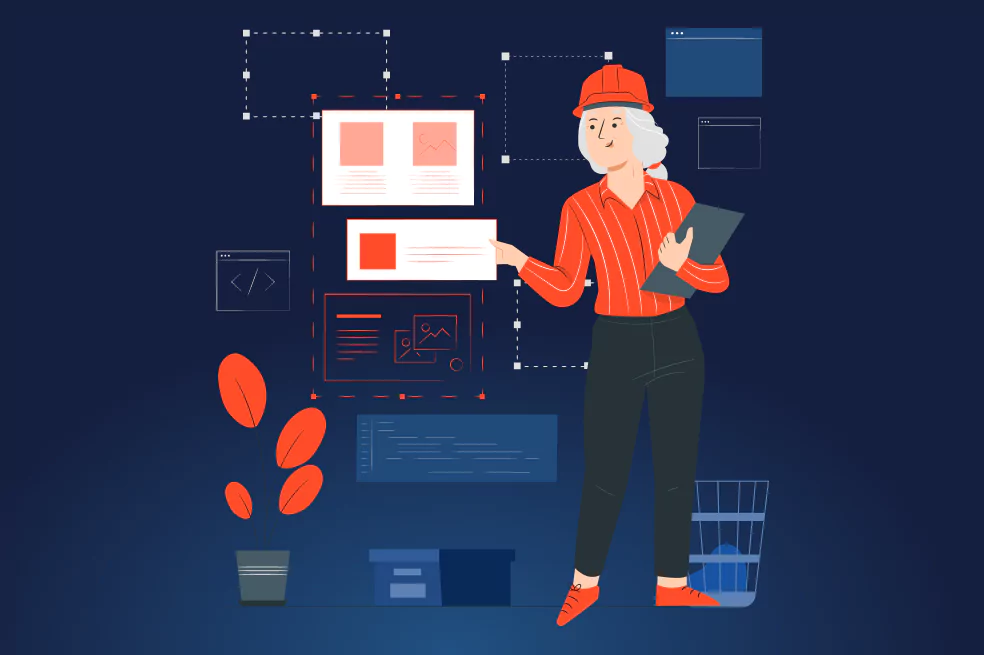The outbreak of the COVID-19 pandemic has changed the rules for the real estate business. Good location and square meters don’t matter much today, while contactless interactions and personalized customer experiences are the main drivers.
That is why real estate businesses try to introduce new software solutions to create unique value for their customers. According to Deloitte, 82% of real estate businesses confirm that they’re going to engage in property management software development because of the pandemic.
Property management software (PMS) is the most popular tech solution for the real estate industry now. Globe Newswire reports that the global property management programs market reached a value of $1.51 billion in 2020 and will grow at a CAGR of 5.6% within the next 6 years.
Property management software market grows for a reason, as PMS helps to deal with various problems such as rent collection, remote communication, or management of the workplace.
However, building your own real estate property management software can be challenging. You may be puzzled by several questions: What type of property will your PMS apply to? What business models work best? What technology better suits the development process?
JatApp has successfully delivered more than 200 projects, many of which belong to real estate industry. We have 6 years of experience in PMS development, so we prepared an ultimate guide for you on how to develop property management software for real estate that will meet the needs of your customers.
How does PMS help the real estate business?
Property management companies and other real estate businesses have many problems to solve. Collection of rent payments, scheduling maintenance works, property advertising and promotion, and communicating with tenants are just a few of the everyday tasks property companies have to deal with.
Also, we have to remember that lockdown restrictions and social distancing measures must be followed, so people have new needs now. That’s why real estate businesses search for ways to improve the living experiences of their customers. COVID-19 safety, contactless interactions, and management of work-life balance at home are the main areas where digital transformation of property business is much needed.
Property management software features solves the above mentioned problems with:
- Messaging/calling tenants and service providers
- Automated billing features
- Marketing analytics
- Digitalization of accounting tasks
- Smart space management
- Integration with Internet-of-Things (IoT) devices and smart home solutions.
Types of property management system
There are two major types of PMS: commercial and residential.
Commercial PMS
Commercial PMS is developed for commercial types of property. Actually, commercial property can vary from a basic store to office space or warehouse. It is a reason why commercial PMS solutions usually solve problems according to the purpose a particular real estate asset serves.
For example, RealPage is a cloud-based property management software that manages problems that are typical for property hosting various businesses: marketing analytics, accounting, financial risk management, and maintenance works scheduling.
Financial data analytics in RealPage
At the same time, workplace/office management solutions are gaining popularity because of a need to take safety measures to avoid spread of the coronavirus. Such PMS solutions enable office managers and employees to use working space with maximum efficiency and safety.
Edenworkplace makes a good example of a workplace management system. The solution involves meeting room booking, placing desks within the range of social distancing, visitor management, and even employee health/vaccine status notifications.
Desk booking feature in Edenworkplace
Commercial property management software usually uses a full-service business model, when a real estate business takes care of all issues their customers may have. For instance, a property management company provides its own plumber service in case a tenant sends a complaint about absence of tap water in their house.
However, you can develop a marketplace PMS that connects different parties: property managers, service providers, tenants, and the like. Plentific is a valid example of how marketplace PMS works.
It connects property managers and landlords with service providers to manage maintenance works and other services. In this case, when a tenant complains about the absence of tap water, a property manager uses the marketplace PMS to find a third-party plumber who will work on the problem.
How Plentific works
Residential PMS
This type of PMS manages problems related to residential real estate. Rent collection, tenant notification, planning of maintenance works, and listing of vacant apartments at property search websites are the most common problems residential PMS solves. Again, this type of property management system software usually follows a full-service business model, but the marketplace residential PMS are common.
At the same time, let’s not forget that residential property business is no less affected by the pandemic. Since people stay at their homes during lockdowns and avoid social contacts, smart homes and remote access solutions are also becoming popular.
IoT-based property access control is one of the common examples. This solution provides a distant communication via camera, and a visitor can access the property with a temporary PIN code sent to their device. It helps to avoid social contacts and give property access to service providers or couriers when the owner/tenant is not at home.
It would be unfair not to mention smart home solutions that can be integrated with property management software. Today, people have to work from their homes because of the COVID-19 restrictions. It means that an apartment should be a workplace and comfortable living space at the same time, so that a tenant/homeowner can easily switch between these two scenarios.
Stratis is an example of a smart home ecosystem that involves control of power consumption, HVAC, lighting, and home appliances. In such a way, users can create preset automated scripts for their smart home devices, and quickly switch them depending on the time of day or specific activity.

Stratis user interface
Even though commercial and residential PMS are two major types, it’s possible to classify property management software programs according to deployment and users. The pandemic situation requires your product to create an exclusive value for customers, so having a deeper understanding of PMS solutions will help you to come up with your own unique idea. You can learn more on this topic in our other article about types of real estate management software.
What technology you need to develop PMS
If you’re going to build a property management software, you have to know what technology to use. Each technology has its benefits and disadvantages that influence the development process. Having even the basic understanding of different technologies used for PMS development can help you decide what approach is best for your business needs.
Cloud
Cloud computing is the way of delivering software over the Internet. The data as well as the whole infrastructure are stored on a remote server, so users can access cloud-based software anywhere from any devices, including smartphones.
For instance, a tenant has an urgent request for maintenance works, while the property manager can’t access their office computer to respond. Instead, managers can use their personal smartphone/tablet and contact service providers to ask for help with the problem.
How cloud computing works
Software-as-a-Service (SaaS)
Accessing software everywhere and from any device is a good advantage, but cloud-based software can benefit your customer with cost savings as well. Software-as-a-service is a delivery model of cloud software, which charges customers only for how much they used the software.
Such kind of on-demand model automatically scales up or down expenses of a customer according to the level of software use. SaaS providers usually offer monthly or annual subscriptions on their products, but other ways to charge for software usage are also possible.
A microservice architecture
Whatever technology you pick up for building your property management software, the development process can get complicated. Since PMS includes multiple features and may have several types of users at the same time, technical problems are more likely to disrupt the work of the entire solution.
Various processes depend on each other in a conventionally centralized approach to software development. You may have a little problem with one process, but the entire product fails to work.
A microservice architecture is a good way to avoid such problems. When using microservices, the development of a complex application is split into independent blocks connected to each other via fast and simple protocols like HTTP. Development of the entire set of blocks doesn’t require use of the same programming language, so several teams can work on each block individually.
Our case with property management app, Cunio, is a good example here. JatApp worked on a notification microservice responsible for user notification events within different channels like SMS and Email.
Cunio user interface
At the same time, the startup’s in-house team worked on the development of new features to pursue growing business needs of a company. As a result, the product was developed without disruptions, because JatApp was able to work independently from the client’s team.
Features an advanced PMS should have
Development of a customized property management system should consider who will use the software. No doubt, PMS can be used by anyone, but let’s focus on the most common groups of users and what they expect from an advanced property management software.
People working in office
- Space management. Office employees often face a problem with sharing the workplace and deciding who will use meeting rooms. Desk reservation and meeting room booking features help offices optimize their space use. Also, detection of various minor problems that make the workspace less organized is important for productive work. As an example, JatApp worked on Near Miss Reporting App that is integrated with the client’s workplace management system and encourages office workers to report about any near misses they see.
Near Miss Reporting App user interface
- Visitor management. Offices need to plan visits of their partners and other external parties. Notification about a visitor’s arrival, COVID-19 status prescreening, office access control, and contactless signing of NDA are the most important features for making office visits safe and trouble-free.
- Ticketing. Workers may have workplace and technical problems, so their faster handling can save time and productivity of employees. An ability to manage workplace or technical requests within one system is a feature that simplifies the job of office managers and system administrators.
- COVID-19 safety. Even though the pandemic isn’t over, many companies returned back to their offices. Still, COVID-related safety measures must be observed. Employee health/vaccination status notifications, analytics of space occupancy, and planning of desk placement with consideration of social distance can significantly reduce the risk of infection and spread of the coronavirus within the office.
Property managers and landlords
- Tenant screening. Landlords and property managers need to ensure that tenants will pay rent on time and keep property nice and clean. Features like background checks, as well as a review of the debt history and criminal record of potential renters can help with this task a lot.

- Rent collection. Tenants may simply forget to pay rent on time or have no banks open nearby. Attachment of credit cards to a rental property management software for automating rent payments is a simple yet useful feature that you shouldn’t overlook.
- Maintenance works planning. To have exclusive living experiences in the rented housing, tenants need to have all facilities working well and get repaired as fast as possible. That’s why the feature of planning maintenance works, especially urgent ones, will never go out of fashion.
- Marketing management tools. Property managers and landlords intend to have as many residents as possible. Placing vacant property at listing websites and ads management for property search portals are the features property managers and landlords expect from a good PMS. In addition, availability of detailed marketing analytics will earn your solution many extra points as well.
Marketing analytics tab in PMS
- Accounting. Real estate companies as well as any other business have to deal with accounting-related aspects constantly to avoid financial and legal problems. But truth be told, preparing financial statements and their management is the worst nightmare of property managers, so a great PMS needs to include automated financial report creation.
- Tenant notification. It is essential to keep in touch with tenants to notify them about any upcoming events. Timely informing about property inspection, maintenance works, temporal unavailability of facilities/utilities, and expiration date of lease agreement can help to avoid many misunderstandings.
Co-owners and housing associations
Property owners may not want to delegate management of their real estate to property management companies. Housing associations are independent entities that work as a community of owners sharing responsibilities of property managers.
Co-owners are a similar group of users, but they don’t provide their property for rental as they live in it. Both groups of users don’t depend on the services of property management companies, so they deal with all problems themselves. They will particularly value real estate management software with the following features:
- Payments processing. Automated and transparent transactions are the main features that can build trust among co-owners or members of a housing association. When everyone can see how budget money is spent or whether all rent payments are collected, conflicts are not likely to happen.
Rent payment feature
- Arrangement of maintenance works. Co-owners and housing association members don’t devote all their time to property management, as they have their personal things to do. For that reason, having the ability to plan maintenance works beforehand is a convenient feature which ensures that the property is kept in a good condition.
Maintenance works planning dashboard
- Inspection planning. Aside from basic maintenance works, property may require inspection of its facilities and living conditions. Again, co-owners and house association members need to schedule inspections on time and inform their neighbors/tenants about upcoming checkups.
- Legal compliance support. Running property independently from any real estate company means that co-owners and house associations need to keep an eye on legal compliance as well. This task is challenging for people who don’t have profound knowledge of real estate regulations, which, by the way, tend to change quite often. The French startup Matera, for instance, solves this problem by offering co-owners constant legal and accounting support from real estate experts, so it’s another competitive feature you may consider for your PMS product
- Accounting management. Accounting is also a challenge co-owners and housing associations need to face, so automated creation of financial statements and their management are helpful features in this case as well.
Tenants and homeowners
- Rent payments and billing automation. Again, attachment of credit card for regular rent collection is a feature equally important to tenants, as they want to be confident that they didn’t forget to pay rent on time. As for homeowners, they still have many bills to pay. Utilities, Internet and cable TV, along with other relatable services can be automatically billed and paid from one application and that’s what you should consider when developing your PMS.
- Maintenance works request. Everyone wants to live in a comfortable apartment with all facilities and utilities working as they should. Enabling tenants to request maintenance works fast enough within a PMS adds value to their renting experience and increases chances for lease contract renewal.
- Security alarm. In case of a fire, natural disaster, robbery, or any other accident, a security alarm will notify the property manager and call 911. This feature is commonly integrated with IoT alarm systems that automatically send notifications when smart sensors detect any dangerous event.
Security alarm feature in Cunio
- Access authorization. Similar to visitor management, this feature enables tenants and homeowners to check who comes to their home via camera. When unauthorized access is detected, an alarm notification is sent. Additionally, access authorization with passcode or biometric data is another common feature.
- Smart home integration. You may say that smart homes are a different real estate technology, but building property management software to provide customers with exclusive experiences means going beyond the limits. TechCrunch reports that Plentific plans to advance its solutions with IoT integrations to speed up digitalization in the real estate industry. An expanded property management system software can create more opportunities for making custom solutions, so integrating PMS with smart home solutions is definitely worth considering.
- Power consumption control. Many tenants and homeowners are particularly conscious about the environmental footprint they leave. People spend more time staying at home, so their energy use is higher than before the pandemic. Monitoring and control of utilities consumption can help users avoid wasting energy and water, thereby leading to a more eco-friendly lifestyle and reduced expenses as well.
Real estate investors
The pandemic affects this group of users as well, because the economic crisis caused by the COVID-19 forces property investors to be more careful with financial decisions they make. The following features can help them make more informed investments and avoid financial risks.
- Development of financial statements. Property investors make decisions based on financial reports they have, so their convenient creation and clear presentation are helpful features to include in your product.
- Market analytics and forecasting. The pandemic has disrupted the real estate industry, so prices on real estate are extremely unstable now. Use of Big Data analytics and market forecasting in your PMS for better decision-making can help property investors put money into property with less risk.
- Leverage management. Likewise, property investors need to measure financial leverage for their real estate. They don’t want to risk making such serious estimates on their own, so calculation of leverage with artificial intelligence is a feature every single property investor dreams about.
- Insurance management. Management of real estate insurance is also a complex task. When something bad happens to the real estate, viewing all necessary information within a single dashboard can help property investors understand whether they can expect insurance coverage.
Build your property management software with JatApp
To sum things up, building your custom property management software requires you to keep in mind that your product has to make the experiences of your customers as exclusive as possible.
To achieve this goal, you have to choose between commercial and residential types of PMS, and decide whether it will use a marketplace or full-service business model. However, we want to highlight once again that the focus on users is paramount. The functionality of your future solution heavily depends on your user base.
We also highly recommend you to select a microservice architecture for development of your property management software. PMS systems usually contain multiple processes that depend on each other, while a microservice architecture enables you to develop each process independently. It also provides you with an opportunity to quickly scale up the solution when your business needs start growing.
You won’t argue that real estate management software development is a big challenge. So, you need a team of professionals who can help you with building your PMS solution according to the needs of your customers. With 99% of customer satisfaction rate, JatApp can help you with property management software development. You’ll save up to 60% of your costs compared to the Western markets, while the product will meet your expectations entirely.
Contact us, and we will get in touch with you soon to discuss the details.














